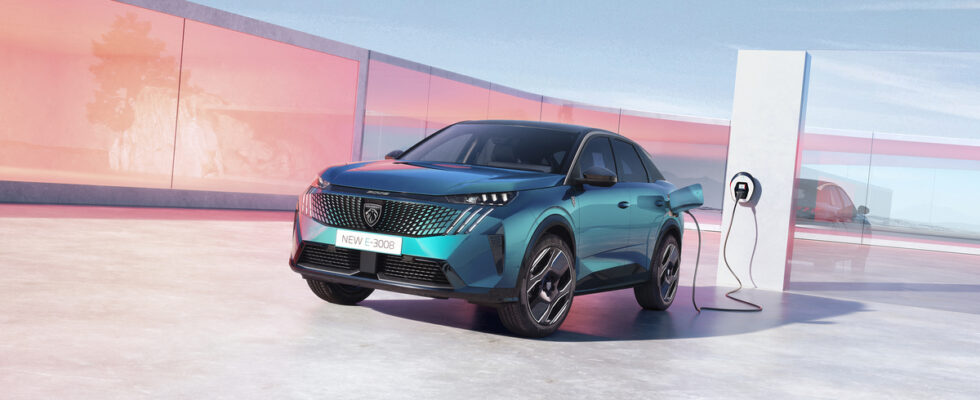The third generation Peugeot 3008 offers a new 100% electric version e-3008. It is highly anticipated, since it is derived from one of the most popular models on the market. Unfortunately for Peugeot, this version has been the subject of criticism since its announcement.
After its very high mass of 2.2 t and its prices higher than those of the Renault Scenic E-Tech and Tesla Model Y, the e-3008 will have to deal with a lower autonomy than initially announced.
Thus, in its communication, Peugeot has discreetly removed 20 km of range from the most enduring version of its e-3008, which will arrive in 2025, after Citroën did the same with its ë-C3 (from 320 to 300 km maximum autonomy). Initially given for a maximum autonomy – depending on the equipment – of 700 km in the WLTP cycle, this version equipped with a huge battery of 98 kWh of useful capacity now announces up to 680 km of action radius, a figure still in awaiting final approval. The maximum range of the entry-level version and the 4×4 version, however, is unchanged, at 527 km.
This reduction is certainly quite insignificant, and we will have to wait for the final approval of the model to know its exact WLTP autonomy. However, manufacturers usually take a little leeway and we are used to the final approval showing a range slightly higher than that initially announced, 5 or 10 km for example. This will therefore probably not be the case for the e-3008.
Autonomy that remains more than sufficient
In any case, the autonomy of the Peugeot e-3008, even with its smaller battery, seems more than sufficient. A Tesla Model Y Long Autonomy, although positioned in the higher segment, thus displays “only” 533 km of maximum range.
Furthermore, those familiar with electric cars know that range is not the only important variable to take into account when considering long journeys, where breaks are widely recommended in any case. As the mesh of charging networks improves, it is rather the autonomy regained per minute of charging that matters, and therefore the charging powers as well as the efficiency of the vehicle.
On these points, the Peugeot e-3008 does not break any records. Its direct current charging power is announced at 160 kW peak, enough to go from 20 to 80% charge in 30 minutes for the 73 kWh battery. The 98 kWh battery would charge slightly faster. The e-3008 is also quite greedy, compared to the Renault Scenic E-tech for example. The latter announces 430 km of maximum WLTP autonomy (final approval) in the comfort version with a useful 60 kWh battery and up to 625 km of range in the long-range version with a useful 87 kWh battery.
The e-3008 has already lost out to the Scenic E-Tech among the juries for the election of the car of the year, who largely praised the Renault model. We will wait for both vehicles to pass through our hands to let you know our preference.
